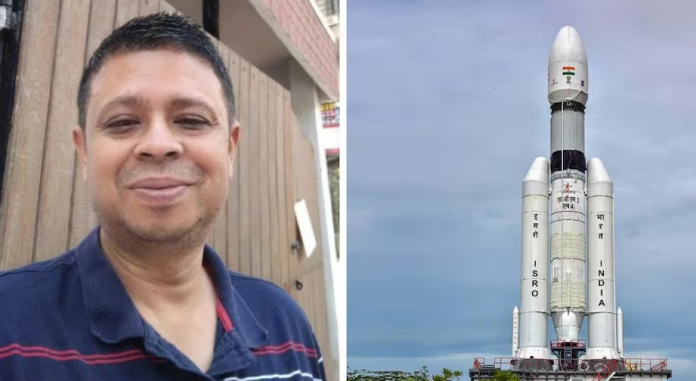India’s third lunar mission is all set for launch on Friday. Chandrayaan-3 is loaded with more fuel, a slew of safety measures, and a bigger landing site, with ISRO saying it has opted for a “failure-based design” for the second attempt to ensure that the rover successfully lands on the moon even if some things go wrong. Chandrayaan’s launch control operations will be headed by Assam’s Chayan Dutta making a great leap for the entire scientific community of Assam.
Chayan Dutta is an alumnus of the Department of Electronics & Communication Engineering, Tezpur University.
He is working as a Scientist/Engineer-G at UR Rao Satellite Centre, Department of Space.
He is also heading the “On Board Command Telemetry, Data Handling & Storage System, Lander, Chandrayan-3” as Deputy Project Director.
The Command and Data Handling subsystem is essentially the ‘brains’ of the orbiter and controls all spacecraft functions.
Talking to the media, Chayan Dutta said, “I am deeply honoured and humbled to have been entrusted with the responsibility. This mission represents a significant milestone for our nation and the global scientific community.”
Chandrayaan-3, set for lift-off at 2:35 pm on July 14, will be a follow-up mission after the crash-landing of Chandrayaan-2 in September 2019 due to a software glitch. Indian Space Research Organisation (ISRO) Chairman S Somanath on Monday said instead of a success-based design in Chandrayaan-2, the space agency opted for a failure-based design in Chandrayaan-3, focused on what all can fail and how to protect it and ensure a successful landing.
Chandrayaan-3: All You Need to Know About India’s Moon Landing Mission
- Chandrayaan-3 consists of an indigenous Lander module (LM), Propulsion module (PM) and a Rover
- The Lander will have the capability to soft land at a specified lunar site and deploy the Rover which will carry out in-situ chemical analysis of the lunar surface during the course of its mobility.
- The Lander and the Rover have scientific payloads to carry out experiments on the lunar surface.
- The main function of PM is to carry the LM from launch vehicle injection till final lunar 100 km circular polar orbit and separate the LM from PM.
- Apart from this, the Propulsion Module also has one scientific payload as a value addition which will be operated post separation of Lander Module.
- The launcher identified for Chandrayaan-3 is GSLV-Mk3 which will place the integrated module in an
- Elliptic Parking Orbit (EPO) of size ~170 x 36500 km.





